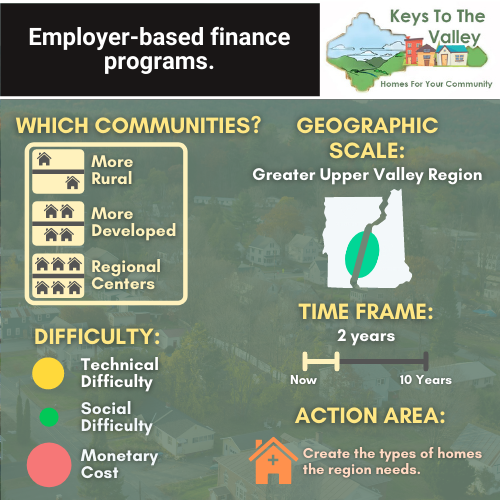Employer Assisted housing programs facilitate workers obtaining affordable housing and those that create affordable housing. Design of these programs is critical for success. Usually these programs involve the employer(s), nonprofit/gov’t admin, and a technical assistance provider. An employer, or group of employers, can put forward available resources to benefit a variety of strategies, such as:
- Mortgage Assistance: Employers offer their workers loans or grants to help overcome the initial barrier of homeownership. Mortgage guarantee is where employers guarantee all or a portion of an employee’s mortgage against default. Most aid is also coupled with homebuyer education and counseling to help employees understand and navigate the process for better success rates.
- Rental assistance, such as rent subsidies, operating/renovation funds to a property owner, or payment of a security deposit. Some employers sign a master lease and then rent to employees.
- Gap financing: Loans to developers to cover gaps in development financing.
- Leveraging credit: Lend borrowing power to developer to help secure higher loans at better interest rates.
- Direct cash or land contributions.
- Purchase guarantees: Assist developer to get financing by guaranteeing purchase of unsold units.
- Employers can help finance market rate developments and then use that leverage to require lower purchase prices or rents, low income set asides, or equity provisions.
The Rochester First Homes Initiative is an example of a program involving multiple employers. The biggest employer (Mayo Clinic) created challenge grants where a one-to-one match was required to encourage other employers to give their support.
Additional Resource:
- Employer-Assisted Housing – Equitable Development Toolkit by PolicyLink
- Related Tool Employer Based Education Programs (Part of Action Area D – Make It Easier to Build Homes)


